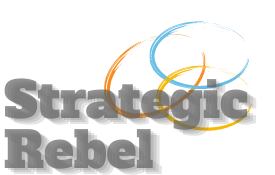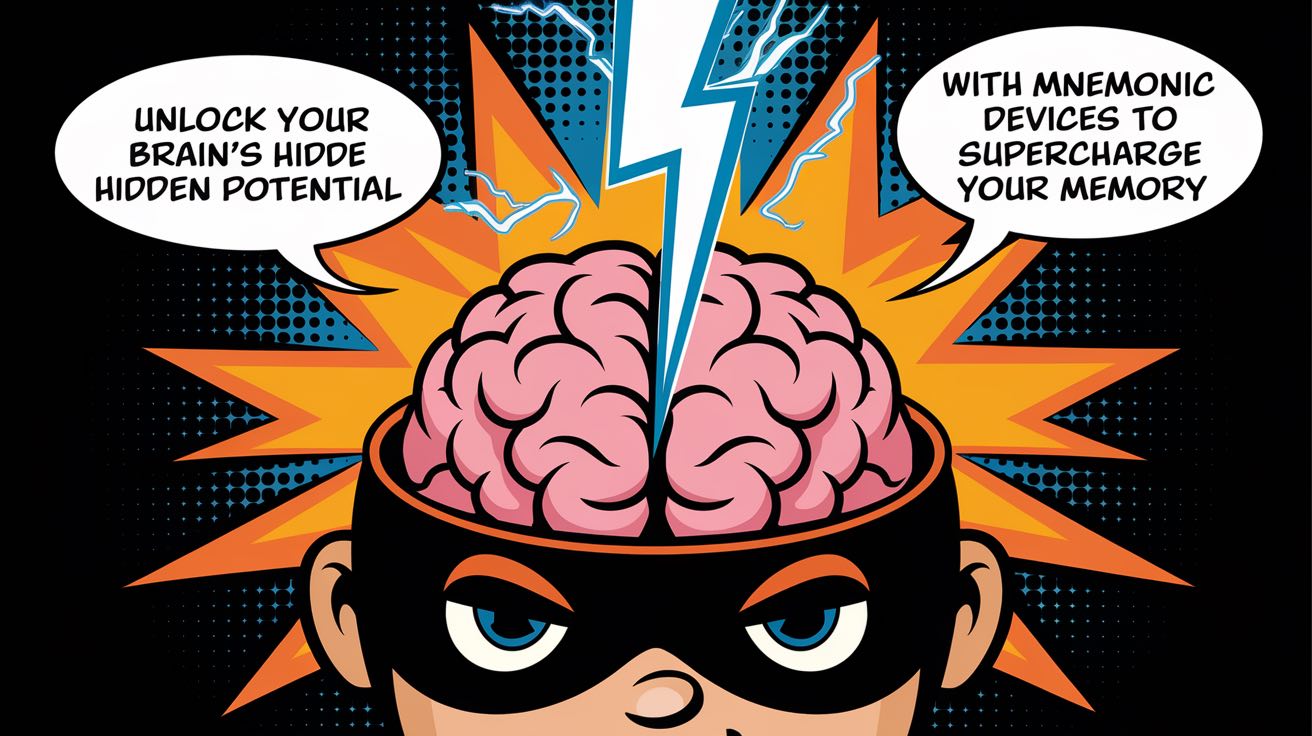Unlock Your Brain’s Hidden Potential With Mnemonic Devices to Supercharge Your Memory Today!
You ever have one of those moments where you’re mid-sentence, and bam—the one thing you needed to remember just vanishes? Yeah, me too. And let’s be real, it’s not a good look.
Alright, solopreneurs, online marketers, speakers, and students—listen up, because this is the next-level upgrade you didn’t know you needed.
Are you constantly scrambling to remember that key client’s name, the punchline to your killer presentation, or the 14 things on your mental to-do list that somehow slip away right when you need them most? Let’s face it: in your world, forgetfulness costs you. It costs you time, it costs you confidence, and—let’s be real—it can cost you cold, hard cash.
But what if I told you that you could instantly flip a switch in your brain and recall anything—from a sales pitch, (something I had to do daily) to an important meeting date, to that one fact that blows your audience’s mind—whenever you want?
It’s not magic, it’s not woo-woo. It’s a strategy. And these 10 mnemonic devices will turn your memory into a steel trap for success. Imagine walking into every meeting, webinar, or exam with the confidence of someone who never forgets… because you won’t.
For the solopreneur juggling 20 different projects, these tools will help you remember every last task without living in a sea of sticky notes. For the online marketer, it means no more forgetting that killer conversion stat or the latest product feature during a live launch. And for the professional speaker or student, you’ll be able to deliver that speech or crush that exam without a single stutter.
This isn’t just about remembering better—it’s about showing up as the best version of yourself. These mnemonic tricks are the hidden advantage your brain’s been waiting for. So if you’re ready to unlock your limitless potential?
1. The Classic Acronym: Your First Memory Mnemonic Superpower
We’ll start with a familiar favorite – the acronym. This simple yet effective technique involves using the first letter of each word in a list to create a memorable word or phrase. For example, ROY G. BIV helps us remember the colors of the rainbow (Red, Orange, Yellow, Green, Blue, Indigo, Violet).
Pro Tip: Create fun, quirky acronyms for maximum memorability. The sillier, the better!
2. Acrostics: Turning Lists into Literature For Easier Memorization
Similar to acronyms, acrostics use the first letter of each item to create a sentence. A classic example is “Every Good Boy Does Fine” to remember the lines of the treble clef in music (E, G, B, D, F). This technique works wonders for remembering lists in a specific order.
3. The Memory Palace: Build Your Mental Mansion to Remember Anything
Also known as the Method of Loci, this powerful technique involves associating information with specific locations in a familiar place. Imagine placing each item you need to remember in different rooms of your house. To recall, simply take a mental walk through your “palace.”
Fun Fact: Memory champions often use this technique to perform seemingly impossible feats of recall!
4. Rhymes and Songs: A Mnemonic Device Which Uses Melody for Your Memory
Set information to a catchy tune or rhyme, and you’ll be amazed at how easily it sticks. Remember learning the alphabet through the ABC song? That’s the power of musical mnemonics in action!
5. Chunking: Breaking Down the Memory Mountain For Maximum Effectiveness
Chunking involves breaking large pieces of information into smaller, more manageable “chunks.” For example, remembering a phone number as 555-867-5309 is easier than 5558675309. This technique is particularly useful for numbers and complex data.
6. The Keyword Method: When You Want to Use Mnemonic Devices to Learn a New Language
This technique is a game-changer for language learners. Associate a new word with a similar-sounding word in your native language, then create a vivid mental image connecting the two. For instance, to remember the Spanish word “perro” (dog), imagine a dog wearing a pair of rows of socks.
7. The Peg System: These Mnemonic Devices Help Hang Your Memories on Mental Hooks
Create a list of “peg words” that rhyme with numbers (1-bun, 2-shoe, 3-tree, etc.). Then, associate each item you want to remember with the corresponding peg word. Need to remember your grocery list? Imagine a bun-shaped milk carton, shoes filled with eggs, and apples growing on a tree!
8. The Story Method: Weaving Memories into Narratives
Create a story that incorporates all the items you need to remember. The more outrageous and vivid the story, the better! This technique works wonders for remembering lists of unrelated items.
9. Mind Mapping: Visual Brainstorming for Better Recall
Create a diagram with a central concept, then branch out with related ideas. This visual representation helps organize information and shows relationships between concepts, making recall easier.
10. The Link Method: Creating a Chain of Memories
Connect each item you need to remember to the next one in a series of vivid, unusual mental images. The more bizarre the connections, the more memorable they’ll be!
The Science Behind the Magic
You might be wondering, “How do these simple tricks work so well?” The power of mnemonic devices lies in how they align with our brain’s natural learning processes:
1. Elaborative Encoding: Mnemonics encourage us to process information more deeply, creating stronger memory traces.
2. Dual Coding Theory: By combining verbal and visual elements, mnemonics engage multiple areas of the brain, enhancing retention.
3. The Von Restorff Effect: Unusual or distinctive information (like bizarre mnemonic images) is more likely to be remembered.
4. Chunking: Many mnemonic techniques involve breaking information into smaller, more manageable pieces, aligning with our brain’s natural tendency to group information.
5. Active Recall: The process of creating and using mnemonics involves actively retrieving information, which strengthens memory pathways.
Other Real-World Applications
Mnemonic devices aren’t just for students or memory competitors. These powerful techniques have a wide range of practical applications:
– Professionals can use them to remember key points for presentations or important client details.
– Healthcare workers can use mnemonics to recall critical medical information quickly.
– Travelers can memorize important phrases in foreign languages.
– Public speakers can organize their talking points more effectively.
– Anyone can use these techniques to remember names, faces, and personal details in social situations.
Conclusion: Your Memory Transformation Starts When You Use Mnemonics to Improve Your Memory
Congratulations! You’re now armed with 10 powerful mnemonic devices that can transform your memory from ordinary to extraordinary. From the classic acronym to the mind-bending memory palace, these techniques offer a world of possibilities for enhancing your recall abilities.
Remember, the key to success with mnemonics is practice and personalization. Don’t be afraid to get creative and adapt these techniques to suit your unique learning style and needs. With consistent use, you’ll be amazed at how quickly your memory improves.
So, why wait? Start incorporating these mnemonic devices into your daily life today. Whether you’re studying for an exam, preparing for a big presentation, or simply want to keep your mind sharp, these powerful mental tools are your ticket to memory mastery.
Who knows? With dedication and practice, you might even surprise yourself with feats of recall you never thought possible. Your journey to becoming a memory maestro begins now – are you ready to unlock your brain’s true potential?
Frequently Asked Questions
Q: How long does it take to see results with mnemonic devices?
A: You can start seeing improvements immediately! While mastering these techniques takes practice, many people notice enhanced recall after just a few attempts. Consistency is key – the more you use these methods, the more effective they become.
Q: Are some mnemonic devices better than others?
A: Different types of mnemonic devices work better for different types of information and learning styles. Remembering the great lakes is dofferent to remembering passwords. Experiment with various methods to find what works best for you. Many people find a combination of techniques most effective to move information from short-term memory to long term recall.
Q: Can mnemonic devices help with long-term memory?
A: Absolutely! While mnemonics are often associated with short-term recall, regular use of these techniques can strengthen neural pathways, improving long-term retention. A 2021 study published in the Journal of Cognitive Enhancement found that participants who used mnemonic techniques showed improved long-term recall even six months after initial learning.
Including spaced repetition will also improve memory and increase your ability to recall new information.
Q: Are mnemonic devices effective for all ages?
A: Yes! Mnemonic devices can be beneficial for learners of all ages. In fact, a 2019 study in the journal Frontiers in Psychology found that older adults who used mnemonic techniques as an aid showed significant improvements in memory performance, narrowing the gap with younger participants.
Q: Can mnemonic devices help with test anxiety?
A: Definitely! By providing a structured way to organize and recall information, mnemonic devices can boost confidence and reduce test anxiety. Knowing you have powerful recall tools at your disposal can help you feel more prepared and less stressed.




